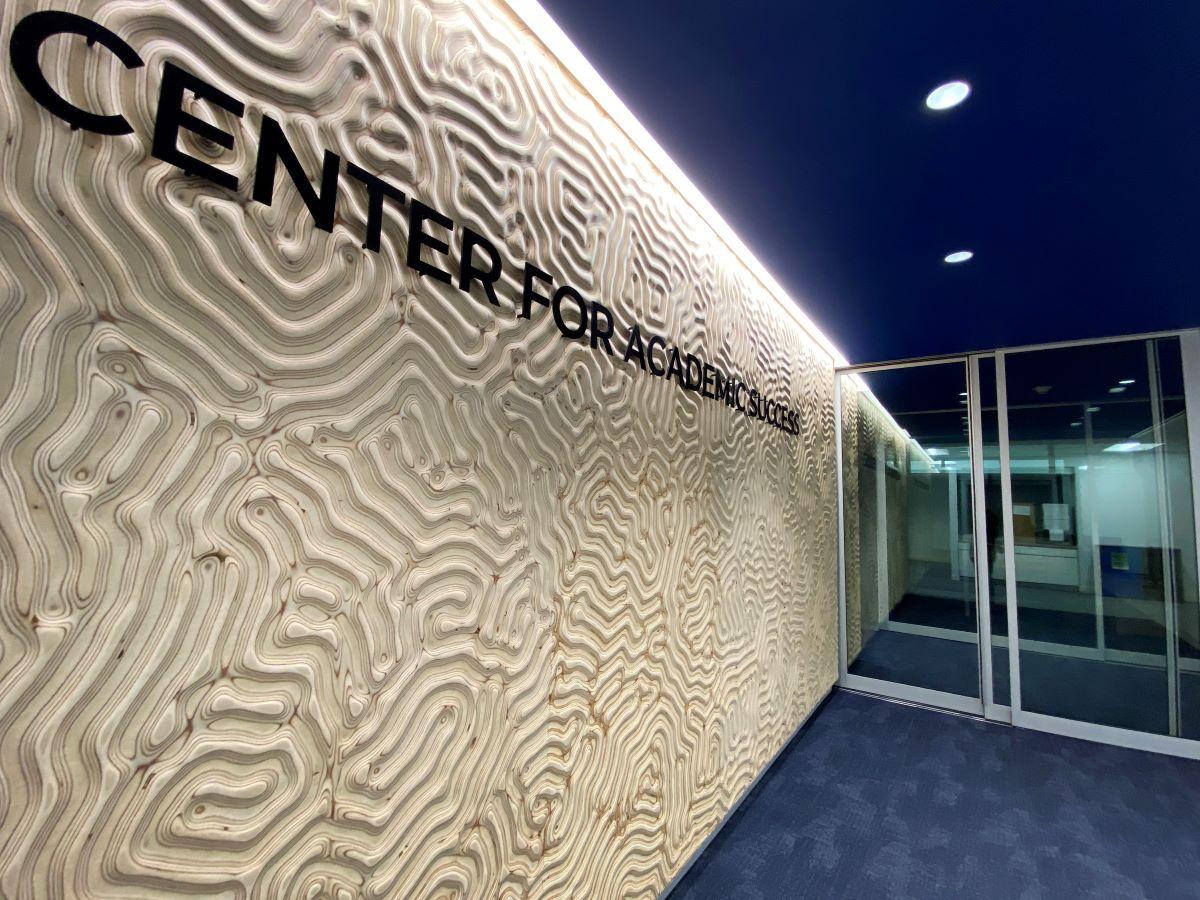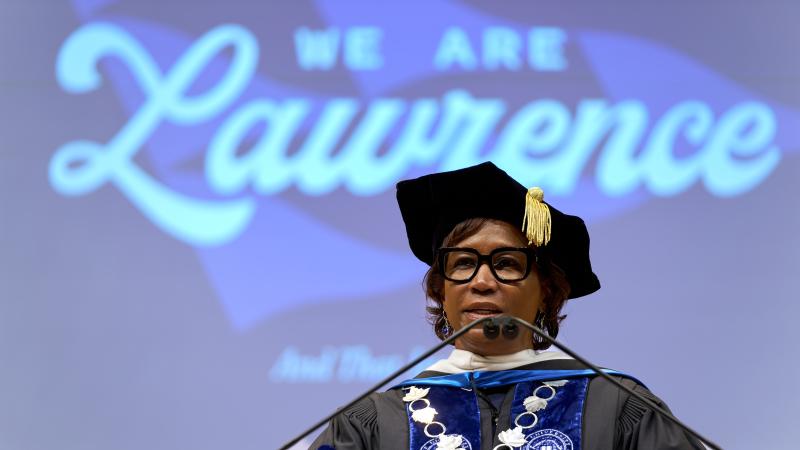The Center for Academic Success (CAS), a staple of student learning at Lawrence in recent years, is newly relocated and renovated and is ready to host more students as soon as pandemic protocols allow.
The second floor of the Seeley G. Mudd Library has been remade courtesy of a $1.5 million investment that was part of the recently concluded Be the Light! Campaign. Even though most staff continue to work remotely, a peek inside shows the possibilities ahead. The renovations have added nine offices, a classroom, a testing room, a conference room, a general tutoring area, a remodeled Help Desk, and a computer lab. The center offers support in areas that range from tutoring to accessibility services to academic counseling.
CAS staff have been working with students throughout the COVID-19 pandemic, but much of that has been virtual or by appointment. When the free flow of students returns, the users of the CAS are going to find a space that is more efficient, flexible, and accessible than the former Briggs Hall location.
The Center for Academic Success (360 Tour)
Above: Explore the CAS in this 360 video. Click and drag on the video to tour the new space.
Since its opening in the mid-2010s, the CAS has been focused on tailoring services to the needs of students. That isn’t changing. The center will continue to act as a one-stop shop for students’ academic needs, helping students to reach their academic goals, said Monita Mohammadian Gray ’92, dean of academic success.
Shortly after it opened in its original location, conversations turned to the need for a larger space that would make more sense for students,
“The past space on the first floor of Briggs evolved in segments, and you could feel that when you were in the space,” Gray said. “Several staff members had offices on the external hallway, intermingled with the Education Department, and the internal space was developed as department needs emerged. It was hard for students to see and understand that we were all connected in the same unit.”
As CAS and university leaders were planning a new space, they wanted to ensure the office would be better connected and visible, centering the needs of students. They also recognized that they had outgrown the space in Briggs. They set their sights on the library.
“One of the primary purposes of moving to the library was to gain more visibility and access for students,” Gray said.
In the new space, they were able to “reconfigure” in a way that allows for more efficiency and effectiveness between CAS staff. Some of the staff have yet to physically be in the renovated space because of the pandemic, but there is a collective excitement, Gray said.
The new space has plenty of added amenities for students.
“We have a large, flexible tutoring space for students to study individually, in small groups or work with our tutors,” Gray said. “We also have more dedicated testing space for students who need reduced distraction, isolated space or extra time for a test because of a disability.”
The new space includes a classroom for use by CAS staff.
CAS moved into the library during Fall Term following construction last summer. Because of the pandemic, most students have not been able to use the new space, making it difficult to gauge student response. But Gray and her staff trust that this move will be a welcomed improvement for students.
“We’re now part of the library space, where students frequently pursue their academic research,” Gray said. “We have an integrated academic learning center. The synergy of these resources—innovative library services, information technology, academic technology, and the Makerspace—is going to be incredibly helpful to all students, and for future academic collaboration.”
Gray called the larger and more efficient CAS a reflection of how the university’s relationship with its students is always evolving.
“When I was a student here, most of the services offered by the CAS were nonexistent,” Gray said. “We [students] had to support each other. Now we have a full suite of services and professional staff who are ready to support students academically.
“At the heart of our work, we take a holistic approach to consider other factors and challenges individual students could be facing that hinder them academically. We then help students work through what is holding them back from maximizing their success.”




